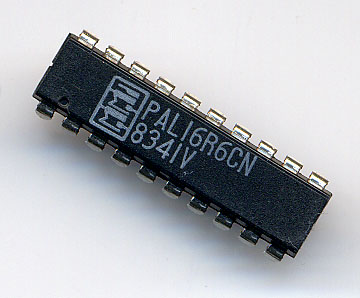|
Linotronic
The Linotronic imagesetters are a type of high-quality printer, capable of printing at resolutions of up to 2540 dots per inch. The Linotronic allowed graphic artists to cheaply set type that exceeded the quality of many phototypesetting systems in use at the time. It allowed output by taking a PostScript file on a removable disk to a service bureau for output on the bureau's Linotronic. Manufactured by Mergenthaler Linotype Company and popularized by the Adobe raster image processor (RIP), enabling PostScript language files to be imaged by the Linotronic imagesetter. Although it was the first commercial usage of PostScript, which began the emergence of graphics applications dominance by Adobe, the first popular use of PostScript was the Apple Laserwriter (succeeded a few months later by the LaserWriter Plus). Adobe's RIPs have generally been named for United States rockets such as ''Atlas'' and ''Redstone'' but Apple's RIP was of its own design, and was implemented using few inte ... [...More Info...] [...Related Items...] OR: [Wikipedia] [Google] [Baidu] |
Apple Laserwriter
The LaserWriter is a laser printer with built-in PostScript interpreter sold by Apple, Inc. from 1985 to 1988. It was one of the first laser printers available to the mass market. In combination with WYSIWYG publishing software like PageMaker that operated on top of the graphical user interface of Macintosh computers, the LaserWriter was a key component at the beginning of the desktop publishing revolution.H. A. Tucker: Desktop Publishing.'' In: Maurice M. de Ruiter: ''Advances in Computer Graphics III.'' Springer, 1988, , P. 296.Michael B. Spring: Electronic printing and publishing: the document processing revolution.'' CRC Press, 1991, , Page 46. History Development of laser printing Laser printing traces its history to efforts by Gary Starkweather at Xerox in 1969, which resulted in a commercial system called the Xerox 9700. IBM followed this with the IBM 3800 system in 1976. Both machines were large, room-filling devices handling the combined output of many users.Benji Ed ... [...More Info...] [...Related Items...] OR: [Wikipedia] [Google] [Baidu] |
Computer Printer
A printer is a peripheral machine which makes a durable representation of graphics or text, usually on paper. While most output is human-readable, bar code printers are an example of an expanded use for printers. Different types of printers include 3D printers, inkjet printers, laser printers, and thermal printers. History The first computer printer designed was a mechanically driven apparatus by Charles Babbage for his difference engine in the 19th century; however, his mechanical printer design was not built until 2000. He also had plans for a curve plotter, which would have been the first computer graphics printer if it was built. The first patented printing mechanism for applying a marking medium to a recording medium or more particularly an electrostatic inking apparatus and a method for electrostatically depositing ink on controlled areas of a receiving medium, was in 1962 by C. R. Winston, Teletype Corporation, using continuous inkjet printing. The ink was a red sta ... [...More Info...] [...Related Items...] OR: [Wikipedia] [Google] [Baidu] |
Dots Per Inch
Dots per inch (DPI, or dpiThe acronym appears in sources as either "DPI" or lowercase "dpi". See "Print Resolution Understanding 4-bit depth – Xerox" (PDF). Xerox.com. September 2012.) is a measure of spatial printing, video or image scanner dot density, in particular the number of individual dots that can be placed in a line within the span of . Similarly, dots per millimetre (d/mm or dpmm) refers to the number of individual dots that can be placed within a line of . DPI measurement in printing DPI is used to describe the resolution number of dots per inch in a digital print and the printing resolution of a hard copy print dot gain, which is the increase in the size of the halftone dots during printing. This is caused by the spreading of ink on the surface of the media. Up to a point, printers with higher DPI produce clearer and more detailed output. A printer does not necessarily have a single DPI measurement; it is dependent on print mode, which is usually influenced b ... [...More Info...] [...Related Items...] OR: [Wikipedia] [Google] [Baidu] |
Graphic Artist
A graphic designer is a practitioner who follows the discipline of graphic design, either within companies or organizations or independently. They are professionals in design and visual communication, with their primary focus on transforming linguistic messages into graphic manifestations, whether tangible or intangible. They are responsible for planning, designing, projecting, and conveying messages or ideas through visual communication. Graphic design is one of the most in-demand professions with significant job opportunities, as it allows leveraging technological advancements and working online from anywhere in the world. Education Referring back to the history of graphic design development, it is evident that the design field was always a skill demanding profession due to variability of printing responsibilities. Unlike pre digital era, where design craft was rather an exclusive practice, the current situation in the field is more accessible and welcoming for everyone. Th ... [...More Info...] [...Related Items...] OR: [Wikipedia] [Google] [Baidu] |
Phototypesetting
Phototypesetting is a method of Typesetting, setting type which uses photography to make columns of Sort (typesetting), type on a scroll of photographic paper. It has been made obsolete by the popularity of the personal computer and desktop publishing which gave rise to digital typesetting. The first phototypesetters quickly project light through a film negative of an individual character in a font, then through a lens that magnifies or reduces the size of the character onto photographic paper or film, which is collected on a spool in a light-proof canister. The paper or film is then fed into a processor, a machine that pulls the paper or film strip through two or three baths of chemicals, from which it emerges ready for paste-up or film make-up. Later phototypesetting machines used other methods, such as displaying a digitised character on a CRT screen. The results of this process are then transferred onto printing plates which are used in offset printing. Phototypesetting offe ... [...More Info...] [...Related Items...] OR: [Wikipedia] [Google] [Baidu] |
PostScript
PostScript (PS) is a page description language and dynamically typed, stack-based programming language. It is most commonly used in the electronic publishing and desktop publishing realm, but as a Turing complete programming language, it can be used for many other purposes as well. PostScript was created at Adobe Systems by John Warnock, Charles Geschke, Doug Brotz, Ed Taft and Bill Paxton from 1982 to 1984. The most recent version, PostScript 3, was released in 1997. History The concepts of the PostScript language were seeded in 1976 by John Gaffney at Evans & Sutherland, a computer graphics company. At that time, Gaffney and John Warnock were developing an interpreter for a large three-dimensional graphics database of New York Harbor. Concurrently, researchers at Xerox PARC had developed the first laser printer and had recognized the need for a standard means of defining page images. In 1975–76 Bob Sproull and William Newman developed the Press format, whic ... [...More Info...] [...Related Items...] OR: [Wikipedia] [Google] [Baidu] |
Service Bureau
A service bureau is a company that provides business services for a fee. The term has been extensively used to describe technology-based services to financial services companies, particularly banks. Service bureaus are a significant sector within the growing 3D printing industry that allow customers to make a decision whether to buy their own equipment or outsource production. Customers of service bureaus typically do not have the scale or expertise to incorporate these services into their internal operations and prefer to outsource them to a service bureau. Outsourced payroll services constitute a commonly provisioned service from a service bureau. The business model question One writer described the ideal service bureau customer as only needing vanilla: very little customization per customer. The phrasing is catering "to the bell curve of customer requirements." If strawberry banana is needed, it is important to ask: :Did they develop their own platform or license or purchase it ... [...More Info...] [...Related Items...] OR: [Wikipedia] [Google] [Baidu] |
Mergenthaler Linotype Company
The Mergenthaler Linotype Company was a company founded in the United States in 1886 to market the Linotype machine (), a system to cast metal type in lines (linecaster) invented by Ottmar Mergenthaler. It became the world's leading manufacturer of book and newspaper typesetting equipment; outside North America, its only serious challenger for book typesetting was the Anglo-American Monotype Corporation. Starting in 1960, the Mergenthaler Linotype Company became a major supplier of phototypesetting equipment which included laser typesetters, typefonts, scanners, typesetting computers. In 1987, the US-based Mergenthaler Linotype Company became part of the German Linotype-Hell AG; in the US the company name changed to Linotype Co. In 1996, the German Linotype-Hell AG was taken over by the German printing machine company Heidelberger Druckmaschinen AG. A separate business, Linotype Library GmbH was established to manage the digital assets. In 2005, Linotype Library GmbH shortened ... [...More Info...] [...Related Items...] OR: [Wikipedia] [Google] [Baidu] |
Raster Image Processor
A raster image processor (RIP) is a component used in a printing system which produces a raster image also known as a bitmap. Such a bitmap is used by a later stage of the printing system to produce the printed output. The input may be a page description in a high-level page description language such as PostScript, PDF, or XPS. The input can also be or include bitmaps of higher or lower resolution than the output device, which the RIP resizes using an image scaling algorithm. Originally a RIP was a rack of electronic hardware which received the page description via some interface (e.g. RS-232) and generated a "hardware bitmap output" which was used to enable or disable each pixel on a real-time output device such as a laser printer, an optical film recorder, computer to film, or computer to plate. A RIP can be implemented as a software module on a general-purpose computer, or as a firmware program executed on a microprocessor inside a printer. For high-end typesetting ... [...More Info...] [...Related Items...] OR: [Wikipedia] [Google] [Baidu] |
Integrated Circuit
An integrated circuit (IC), also known as a microchip or simply chip, is a set of electronic circuits, consisting of various electronic components (such as transistors, resistors, and capacitors) and their interconnections. These components are etched onto a small, flat piece ("chip") of semiconductor material, usually silicon. Integrated circuits are used in a wide range of electronic devices, including computers, smartphones, and televisions, to perform various functions such as processing and storing information. They have greatly impacted the field of electronics by enabling device miniaturization and enhanced functionality. Integrated circuits are orders of magnitude smaller, faster, and less expensive than those constructed of discrete components, allowing a large transistor count. The IC's mass production capability, reliability, and building-block approach to integrated circuit design have ensured the rapid adoption of standardized ICs in place of designs using discre ... [...More Info...] [...Related Items...] OR: [Wikipedia] [Google] [Baidu] |
Programmable Array Logic
Programmable Array Logic (PAL) is a family of programmable logic device semiconductors used to implement logic functions in digital circuits that was introduced by Monolithic Memories, Inc. (MMI) in March 1978. Introductory advertisement on PAL (Programmable Array Logic). MMI obtained a registered trademark on the term PAL for use in "Programmable Semiconductor Logic Circuits". The trademark is currently held by Lattice Semiconductor.Monolithic Memories, Inc (MMI) filed for a work mark on the term "PAL" for use in "Programmable Semiconductor Logic Circuits" on April 13, 1978. A registered trademark was granted on April 29, 1980, registration number 1134025. MMI's first use of the term PAL in commerce was on February 21, 1978. The trademark is currently held by Lattice Semiconductor Corporation of Hillsboro, Oregon. Source: United States Patent and Trademark Office online database. PAL devices consisted of a small PROM (programmable read-only memory) core and additional outp ... [...More Info...] [...Related Items...] OR: [Wikipedia] [Google] [Baidu] |




